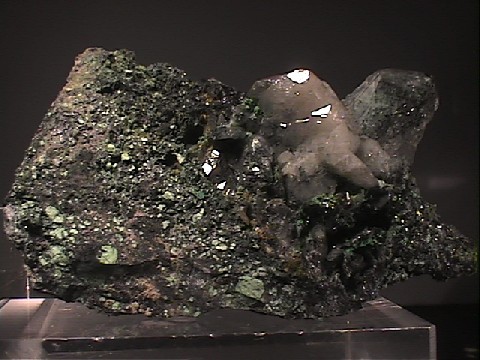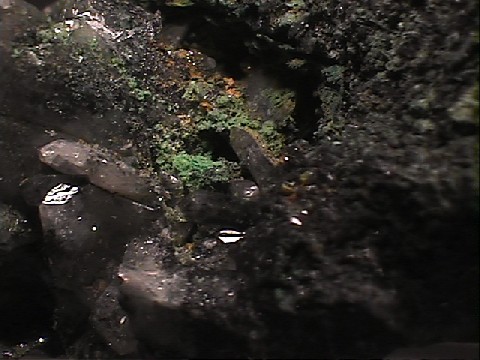 THE
MINERAL ARSENTSUMEBITE
THE
MINERAL ARSENTSUMEBITE
- Chemistry: Pb2Cu(AsO4)(SO4)OH , Lead Copper Arsenate Sulfate Hydroxide
- Class: Phosphates
- Subclass: Arsenates
- Uses: only as a mineral specimen.
Specimens
Arsentsumebite forms good, colorful specimens and is a popular collection mineral, although quite rare. It is closely related to its cousin, tsumebite. The two minerals are in a series in which the arsenate ion group in arsentsumebite is replaced by a phosphate ion group in tsumebite. The two differ only slightly; this is mostly because the structure is the same in the two minerals. Both are formed in the oxidation zone of lead-copper ore deposits.
Both minerals are unusual in that they have two ion groups instead of the usual one in most minerals. It the case of arsentsumebite, it has an arsenate ion group and a sulfate ion group. Mineralogists prefer to classify it as a phosphate (where arsenates are placed) because the arsenate ion group has a higher negative charge (-3) than the sulfate group (-2).
PHYSICAL CHARACTERISTICS:
- Color is green.
- Luster is vitreous.
- Transparency crystals are transparent to translucent.
- Crystal System is monoclinic.
- Crystal Habits include tabular crystals that can form twinned trillings and also as crusts.
- Cleavage: None.
- Fracture: Uneven.
- Hardness is 3
- Specific Gravity is approximately 6.4 (heavy for translucent minerals)
- Streak is green.
- Associated Minerals include azurite, cerussite and smithsonite.
- Notable Occurrences are limited to Tsumeb, Namibia and a few other sites.
- Best Field Indicators are crystal habit, locality, associations, density and color.



